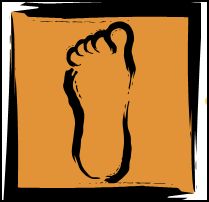More Barefoot Running Science
 If you read this website regularly, you’ll know that while I do like to make fun of barefoot running zealots, I’m actually supportive of some amount of barefoot running.
If you read this website regularly, you’ll know that while I do like to make fun of barefoot running zealots, I’m actually supportive of some amount of barefoot running.
What I’m nervous about is the lack of solid science about what it’s good for and what it’s not going to help.
Thankfully, in large part due to the enthusiasm engendered by Christopher McDougall’s Born to Run, there is a growing body of science regarding the ins and outs of barefoot versus shod running.
There is also a growing body of medical anecdotes about injury rates and barefoot running zombies who are ready to shout down any nay-sayers. (Of course, there are also anti-barefoot running zealots, too.)
The New York Times Well blog has a nice wrap-up of current science. Here’s the money quote:
On this point, he (Harvard’s Daniel Lieberman) and all of the scientists agree. Humans may have been built to run barefoot, “but we did not evolve to run barefoot with bad form.”
There’s a more technical, but quite interesting write-up on the science surrounding barefoot running at The Science of Sport. Here’s the totally out of context money quote:
There are studies showing that runners who run in the more expensive shoes are more likely to get injured, even when you correct for distance and previous injury history. There is also evidence that prescribing shoes according to the shape of the foot (high arch gets a neutral shoe, flat foot gets a motion-control shoe) does nothing to the risk of injury in a sample of 2,000 in the military.
So all in all, it doesn’t look great for shoes.
I think it’s safe to say that if your feet or legs hurt, then you should figure out why. It could be your shoes. Or it could be your lack of shoes. But it could also be something else.
